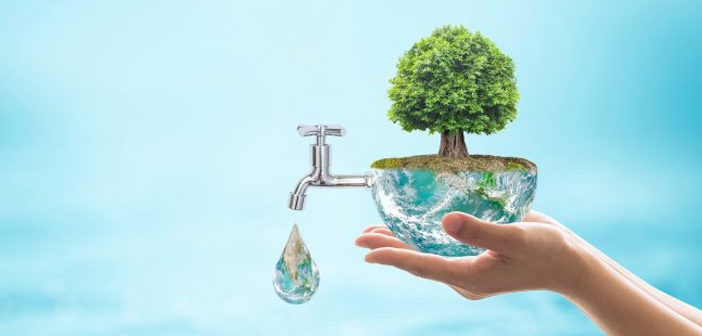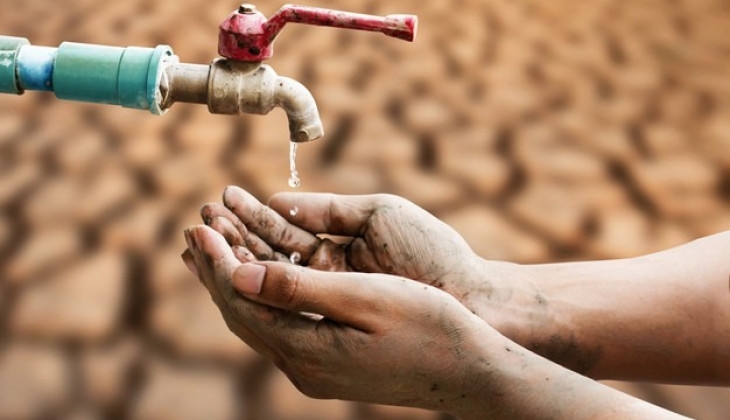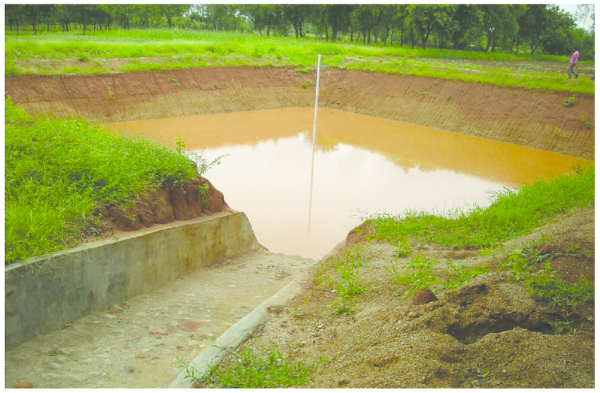World Water Day: History, Significance, and the role of Farm Ponds in Water Conservation.
22 Mar 2023 13:27:55
“Water is the soul of the Earth. - W.H. Auden”
For many people, the water just comes out of the faucet at any time, yet, all over the globe, some people do not have access to clean, safe drinking water. Water demand is increasing as a result of rapid population growth, urbanization, and increased water demands from agriculture, industry, and the energy sectors.

Our country has 18% of the world's population but only 4% of its water resources, making it one of the world's most water-stressed Nations. Decades of mismanagement, poor management, over-extraction of groundwater, and contamination of freshwater supplies have impacted water stress. Furthermore, countries are confronted with increasing challenges related to degraded water-related ecosystems, water scarcity caused by climate change, underinvestment in water and sanitation, and insufficient cooperation on transboundary waters.
When was World Water Day commenced?
It is said that when you lose something, you realize its importance, to not let this thing happen with water, World Water Day was adopted by the United Nations in 1993. Dr. Madhav A. Chitale played a significant role in getting India’s decision-makers and strategic planners to think of water as a resource whose quality and availability must be safeguarded. Dr. Chitale introduced an annual national water resources day in the 1980s. He was the first Indian to internationally put forth the idea of signaling March 22 as World Water Day at the Rio de Janeiro United Nations Conference on Environment and Development, in 1992. The United Nations General Assembly then adopted a resolution by which March 22 of each year was declared World Day for Water, to be observed starting in 1993.
UN-Water organizes World Water Day and chooses the theme each year in consultation with UN organizations with an interest in that year's focus. This World Water Day is about accelerating change to solve the water and sanitation crisis. According to the United Nations, 1 in 3 people lives without safe drinking water. By 2025, half of the global population will be living in water-stressed areas. It is past time for every human being on the planet to save water and find ways to conserve it. Approximately 2.2 billion people worldwide do not have access to safe drinking water. The day is dedicated to thinking about and acting on the global water crisis.
The primary goal of the day is to support the achievement of SDG 6: water and sanitation for all by 2030.
Water's worth is much more than its price. This universal solvent has enormous and multifaceted value for our households, culture, health, education, economics, and the integrity of our natural environment. We risk mismanaging this finite, irreplaceable resource if we ignore any of these values.
Clean water is required for more than just humans. Water pollution kills countless animals every year. Pollution can occur in a variety of forms, ranging from physical litter to wastewater and chemical runoff, causing the water to become toxic to the animals that rely on it for drinking and survival. Many of the environmental issues we face are intertwined; for example, climate change and ecosystem degradation are linked to, and sometimes direct causes of, water pollution, floods, and droughts.
Scarcity and conservation of Water

The scarcity of freshwater is also becoming a significant challenge, particularly in regions facing water stress and droughts. Climate change is exacerbating this situation, with more frequent and intense weather events, such as flash floods and droughts, putting pressure on water resources. The United Nations predicts that by 2050, at least one in four people is likely to be affected by recurring water shortages.
The impact of water scarcity is far-reaching, affecting not just access to drinking water but also food production, energy generation, and industrial activities. Water scarcity can lead to conflicts between different sectors and communities, and aggravate poverty, to the extent of hindering economic development in countries like North Africa and the Middle East. In 2017, water played a major role in the conflict in at least 45 countries.
To address these challenges, it is crucial to prioritize sustainable management of water resources, including promoting water conservation and efficiency, investing in water infrastructure, and protecting water sources from pollution and degradation. Governments, the private sector, civil society, and individuals can all play a role in promoting sustainable water management practices.
There are many ways we can conserve water. One such way is by ways of opting to construct Farm Ponds. Farm ponds are an excellent way to conserve water, especially in areas where water is scarce. By capturing and storing rainfall or surface runoff, farm ponds can provide an additional source of water for irrigation, livestock, and other agricultural activities.
What are Farm ponds and how it has made a difference?

Farm ponds are man-made bodies of water constructed on agricultural land to collect, store, and manage water. These ponds can range from small, shallow depressions to large, deep reservoirs that can hold millions of gallons of water. Farmers use on-farm ponds for a variety of purposes, such as irrigation, livestock watering, fish farming, and flood control. These ponds provide many benefits to farmers, including increased crop yields, improved soil health, and enhanced biodiversity.
Farm ponds have made a significant difference in many parts of the world, particularly in developing countries where access to water is limited. In India, for example, on-farm ponds have been instrumental in increasing agricultural productivity and improving the livelihoods of farmers. The government of India launched the Pradhan Mantri Krishi Sinchai Yojana (PMKSY) in 2015, which aims to create water storage capacity in the form of farm ponds and other structures. Under this scheme, more than 1.5 million farm ponds have been constructed, benefiting over 3 million farmers.
Rajpath Infracon has pledged to be the Agent of change when it comes to the conservation of the environment and its natural resources. Rajpath Infracon has already completed the construction of 34 such huge Farm ponds, collaborating with the local Dr. Panjabrao Deshmukh Krishi Vidyapeeth (Agriculture University), Akola, as a part of the NHAI contract. Such Pond farms constructed by Rajpath Infracon in this region at Anbhora-Sanjapur, Dalimbi, Dudhalam- Chandak, Jamthi, Kurum-Vadgaon, Mana, Madhapuri, Nipana-Oailpada, Pailpada, Rajuda-Sarode, Santoshpur, and such other locations have hugely contributed to ameliorating the grave situation of the water-starved villages in the region, this summer. Dried-up wells revived again as the water table rose, and also contributed to scaling up the irrigation capacity of these regions. Such commitment towards the collection and conservation of water is yielding multiple benefits and will continue to do so for years to come.
To maximize the water conservation benefits of farm ponds, it's important to design and maintain them properly. On World Water Day, it is essential to raise awareness about the importance of water resources, the challenges they face, and the actions required to ensure that everyone has access to safe and sufficient water. It is also an opportunity to celebrate the progress made toward sustainable water management and inspire further action toward achieving the vision of a water-secure world for all.
_202308101326067405_H@@IGHT_0_W@@IDTH_600.jpeg)